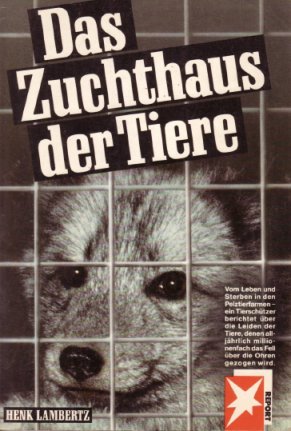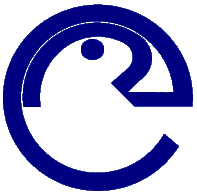Our History
In the years 70 exploded the scandal of the massacres of puppies of seals in various parts of the world.
 In Europe
was constituted the „European Committee Defence of the
Seals and
other fur animals”; the Committee
was composed of representatives of the various
European countries: France, Germany, Holland,
Belgium, Italy, Switzerland, Austria.
In Europe
was constituted the „European Committee Defence of the
Seals and
other fur animals”; the Committee
was composed of representatives of the various
European countries: France, Germany, Holland,
Belgium, Italy, Switzerland, Austria.
Its particular characteristic was that, to be an autonomous organism, but in straight collaboration with the national associations, so much that every representative made also part of an association.
After the achievement of the the prohibition of the hunting to the puppies of seals and the collapse of the marketing of the skins, the Committee in the years 80 began the battle against the breedings of foxes, minks etc.
In Italy it has translated and spread the contents of the book of Henk Lambertz (Dutch representative of the Committee), "the jail of the animals", in which the author, selling himself off for aspirant breeder, could document the monstrous conditions of life and suppression of these animals.
Subsequently, to conform itself to the national normative in theme of associations and for the disappearance of numerous other sections, the Italian Section became autonomous and assumed the name of "Comitato Europeo Difesa Animali onlus" (European Committee Defence Animals NPO).
La nostra Storia
Negli anni '70 esplose lo scandalo dei massacri di cuccioli di foca in varie parti del mondo.
 In Europa si
costituì il Comitato Europeo Difesa delle Foche e
altri animali da pelliccia; il Comitato era composto
da una rappresentante nei vari paesi europei:
Francia, Germania, Olanda, Belgio, Italia, Svizzera,
Austria.
In Europa si
costituì il Comitato Europeo Difesa delle Foche e
altri animali da pelliccia; il Comitato era composto
da una rappresentante nei vari paesi europei:
Francia, Germania, Olanda, Belgio, Italia, Svizzera,
Austria.
La sua caratteristica particolare era quella di essere un organismo autonomo ma in stretta collaborazione con le associazioni nazionali, tanto che ogni rappresentante faceva parte anche di un'associazione.
Dopo che si giunse al divieto della caccia ai cuccioli di foca ed il crollo della commercializzazione delle pelli, il Comitato iniziò negli anni '80 la battaglia contro gli allevamenti di volpi, visoni ecc.
In Italia tradusse e diffuse il libro di Henk Lambertz (rappresentante olandese del Comitato), "la prigione degli animali ", in cui l'autore, spacciandosi per aspirante allevatore poté documentare le mostruose condizioni di vita e di soppressione di questi animali.
Successivamente, sia per adeguarsi alla normativa nazionale in tema di associazioni, sia per la scomparsa di numerose altre sezioni, la Sezione italiana divenne autonoma e assunse il nome di Comitato Europeo Difesa Animali onlus.
Why Committee
Also being an association to all the effects, we have wanted to maintain the denomination Committee because it represents well the formulation of our activity.
 In
difference to the fact, as it normally happens with
the partners of the associations, that are limited
to pay the annual fee and to read - if they do it -
the social magazine, in a committee the components
are all active people that want to work for a common
aim.
In
difference to the fact, as it normally happens with
the partners of the associations, that are limited
to pay the annual fee and to read - if they do it -
the social magazine, in a committee the components
are all active people that want to work for a common
aim.
Who associates therefore wants to work concretely for the guardianship of the nature, the development of the rights of the animals and to assure them a better life, in the limits of the own possibilities: this is why there are those who take care of feline colonies, are against the poaching, against the celebrations with animals, who proposes initiatives.
In short, we are all united by the awareness that our job is as a piece of a mosaic that, however small and meaningless it can seem, together with thousands and thousands of others will form, time after time, a marvellous image.
Therefore the collaboration assumes an extreme importance and the diffusion of the initiatives of the different associations, to overcome the principal limit that countersigns it: the inevitable " competition " that pushes it to set the margin at the work of the others, with the purpose to avoid that its own partners carry verse of their resources that are always unfortunately necessary for their own activity. This is therefore a inevitable consequence of the "shortage of partners."
To avoid to participate at the competition for necessity of funds and partners, our Committee has an essential structure as far as the active partners handle to sustain by themselves the expenses for their own initiatives, as can be read by the extremely reduced budget. Not only, but the basic quota is reduced to the proper minimum to allow the partners as well as to enrol themselves in other associations, as to sustain the expenses for the support of the initiatives introduced on the News-bulletin.
Perché Comitato
Pur essendo un'associazione a tutti gli effetti, abbiamo voluto mantenere la denominazione Comitato perché ben rappresenta l'impostazione della nostra attività.
 A
differenza infatti di quanto accade normalmente con
i soci delle associazioni, che si limitano a pagare
la quota annuale e leggere - quando lo fanno - la
rivista sociale, in un comitato i componenti sono
tutte persone attive che vogliono lavorare per un
fine comune.
A
differenza infatti di quanto accade normalmente con
i soci delle associazioni, che si limitano a pagare
la quota annuale e leggere - quando lo fanno - la
rivista sociale, in un comitato i componenti sono
tutte persone attive che vogliono lavorare per un
fine comune.
Chi si associa quindi vuole lavorare concretamente per la tutela della natura, lo sviluppo dei diritti degli animali e per assicurare loro una vita migliore, nei limiti delle proprie possibilità: c'è quindi chi si attiva per curare colonie feline, contro il bracconaggio, contro le feste con animali, chi propone iniziative.
Insomma siamo tutti accomunati dalla consapevolezza che il nostro lavoro è come la tessera di un mosaico che, per quanto piccola e insignificante possa sembrare, insieme a migliaia e migliaia di altre tessere formerà nel tempo un meraviglioso disegno.
Assume quindi un'estrema importanza la collaborazione e la diffusione delle iniziative delle diverse associazioni, per superare il principale limite che le contraddistingue: l' inevitabile "concorrenza" che le spinge a marginalizzare il lavoro delle altre, al fine di evitare che i propri soci convoglino verso di loro risorse che sono purtroppo sempre necessarie per la propria attività. Si tratta quindi di una conseguenza inevitabile della "scarsità di soci".
Per evitare di metterci in concorrenza anche noi per necessità di fondi e soci, il nostro Comitato ha una struttura essenziale in quanto i soci attivi provvedono a sostenere da sé le spese per le proprie iniziative, come si può leggere dal bilancio estremamente ridotto. Non solo, ma la quota base è ridotta al minimo proprio per permettere ai soci sia di iscriversi ad altre associazioni, sia di sostenere le spese per il sostegno delle iniziative presentate sul Notiziario.
The "Notiziario Animalista" (Animalist News)

Also our social bulletin represents the practice of our way of working: it brings in fact the initiatives of the partners and of a lot of other associations, even those smaller ones, that are not able to spread the own initiatives to a (active!) national public.
For choice it is in recycled paper and monochrome (blue); the active partners are motivated in fact from the contents and don't have necessity of colours and paper of quality; this evidently involves the exclusion towards the public that instead asks for these factors, public however that poorly is activated with letters etc.
The News-bulletin is a periodical for the partners of the Committee, but you can ask for a copy of the most recent numbers sending a postage stamp of € 1,00 + shipping and handling to:
Comitato Europeo Difesa Animali onlus
Via M. Monti, 53
22034 BRUNATE CO
(Italy)
Formed by 8,12,16 pages, it goes out every 2/4 months (double numbers) and it contains every time from 6 to 15 initiatives which all can be sustained by a dispatch of coupons pre-stamped as well as via (common) mail, as by fax, by e-mail or by the collection of signatures.
The partners that desire to sign an initiative, send the material, related to this but don't have to be a copy of the already existing publications, because there are already so many of it, and also beautiful!
Il Notiziario Animalista
 Anche
il nostro bollettino sociale rappresenta nella
pratica il nostro modo di lavorare: esso riporta
infatti le iniziative sia dei soci sia di molte
altre associazioni, specie quelle più piccole, che
non sono in grado di diffondere le proprie
iniziative a un pubblico (attivo!) nazionale.
Anche
il nostro bollettino sociale rappresenta nella
pratica il nostro modo di lavorare: esso riporta
infatti le iniziative sia dei soci sia di molte
altre associazioni, specie quelle più piccole, che
non sono in grado di diffondere le proprie
iniziative a un pubblico (attivo!) nazionale.
Per scelta è in carta riciclata e monocromatico (blu); i soci attivi sono infatti motivati dai contenuti e non hanno necessità di colori e carta di qualità; evidentemente questo comporta l'esclusione nei confronti del pubblico che invece richiede questi fattori, pubblico però che scarsamente si attiva con lettere ecc.
Il Notiziario è un periodico per i soci del CEDA onlus, ma potete richiedere una copia del numero più recente inviando un francobollo da 1 Euro per le spese di spedizione a:
Comitato Europeo Difesa Animali onlus
Via M. Monti, 53
22034 Brunate CO
Formato da 8,12,16 pagine, esce ogni 2/4 mesi (numeri doppi) e contiene ogni volta da 6 a 15 iniziative cui tutti possono partecipare mediante invio di tagliandi prestampati sia per posta, sia per fax, si a via e-mail o attraverso la raccolta di firme.
I soci che desiderano segnalare un'iniziativa, ne inviano il materiale relativo alla stessa ma non deve essere una copia delle pubblicazioni già esistenti perchè ce ne sono già tante, e anche belle!
 CEDA
onlus
CEDA
onlus

